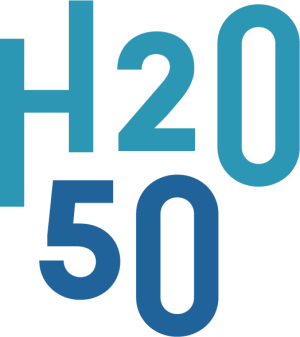A philosophical project, as Bernard Haspeslagh called it. Because the classic economic paradigms cannot contain the total added value of their project on buffers and agricultural methods, for businesses, people, the environment and nature, and the cost-benefit ratio in the narrow sense can therefore not work. A number of added values are not yet visible either, or have not been made visible. Ranging from a rather conventional question about reducing the cost of water purification, to the welfare of the farmers involved, who may have to contend with a little less uncertainty because of the buffer that was created by Ardo: this will become increasingly important in the coming decades, when climate change will cause more and more frequent droughts as well as extreme rainfall. Or perhaps social cohesion and solidarity will be enhanced, now that a group of farmers has been brought together in a cooperative. Ideally, the cooperative can be arranged in such a way that each participant benefits from frugality and purity in their interactions with water. And isn’t biodiversity improving in the region, now that potentially harmful substances are not being used as much to grow vegetables for Ardo?
As such, we are proposing a project that aims to investigate how the regional water metabolism, of which Ardo is part, distributes, connects and can strengthen social (added) value, and thus lead to greater regional water capital. In other words, it is a quest for the nature and design of multiple value creation around Ardo.
We are looking into how we can visualise (or map out) the different values that are connected and made possible through the metabolism. We have chosen the buffer as the core, and try to make the water flows around it visible, and see how value flows (can) relate to this. We examine which practical aspects are necessary, and which infrastructure and institutional arrangements.
To start with, regarding the buffer itself: how big does it need to be ideally, to use too much water in some parts of the year, and during droughts at other times? Which laws and practical objections stand in the way in this regard, and what infrastructure and/or institutional elements can provide a solution? For example: what infrastructure is necessary to make it (cost) effective for users? Which rules follow from the earnings model, which rules can promote frugality and purity? In what (cooperative) institutional arrangement can they be brought together?
The next series of questions concerns corollary elements. What changes in farming practices are needed to enhance frugality and purity there? Which laws and practical objections stand in the way in this regard, and what infrastructure and/or institutional elements can provide a solution? The same questions can be asked for Ardo itself, and for other possible participants in the system. The answers to the questions about the buffer and the corollary elements together can paint a picture of what a coherent and feasible regional water metabolism might look like, and what is needed to make it work.
We look at the ins and outs, those which can be manipulated (drinking water consumption, pumps and locks, e.g.) and those which can’t (rainfall) on different scales (building, district, city, region). We examine the maximum volume of water we can hold, and what the effect would be for regional actors, landscapes and activities. And get an idea of the possibilities of more extensive reuse.
The driver for the research and learning process is action. Understanding the water metabolism and identifying the key questions is done alongside activities in the water metabolism. Looking how the system responds in this respect, and from there developing new approaches, and making the impact increasingly visible, thereby developing an ever stronger basis for system innovation practices, that is the goal.
Who is investing in this inter(active) network, or Water metabolism? In making systemic changes visible under the influence of new partnerships, value networks and technology-society interfaces in the area of integrated water approaches (hydrology, governance, business models, health, etc.), in the Ardooie region. We are looking for investors who are fans of Moneyball, a film in which a young economist makes a difference in scouting for new talent for a team by revealing values of these players that were previously unidentified.
Download all catalysts
Disclaimer
The Flemish Environment Agency (VMM), De Vlaamse Waterweg, De Watergroep, Aquafin, the Flemish Department of Environment, Farys, Pidpa, water-link and VITO - Vlakwa have created the space for a group of fresh thinkers to develop a systemic view of water, and to challenge the water sector to shape a futureproof water system. The formulated ideas are not those of the initiators, nor do they represent their stands. However, they are considered valuable as an inspiration for the future of our water system.
This work is licensed under a Creative Commons Attribution 4.0 International License.
